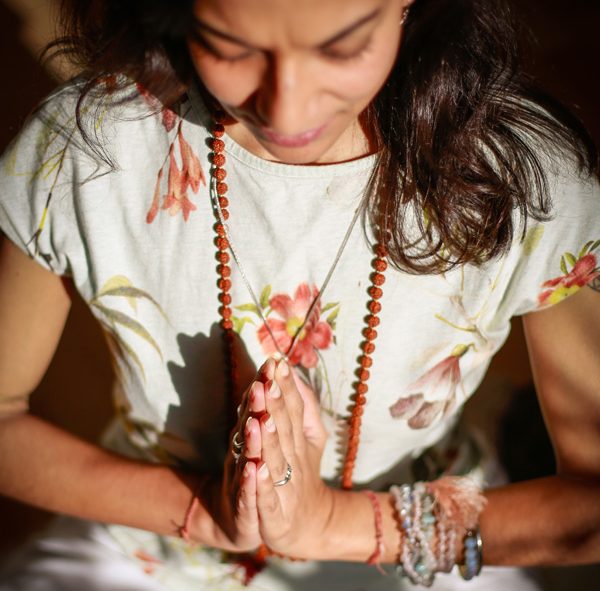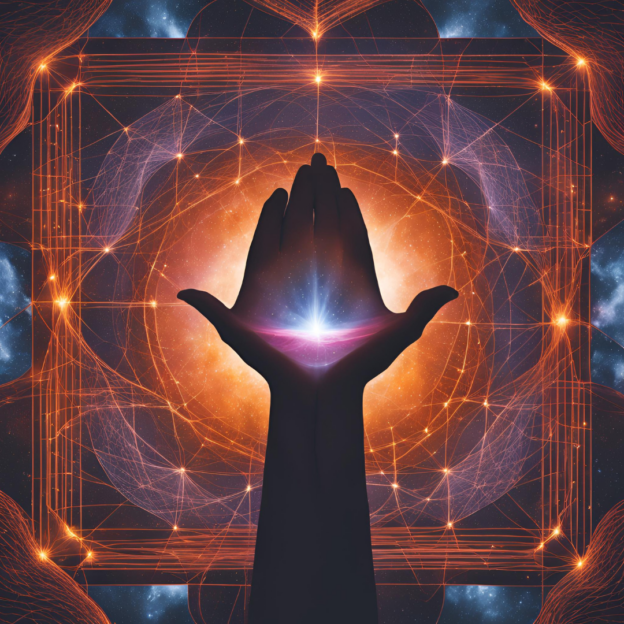Watch the video I made to accompany this article
As our energy systems expands, so does our consciousness and our conscious awareness. Naturally, our perspective shifts and we are able to see more clearly, and with more compassion, how our personal boundaries are holding up.
What I mean by this is – we can see if our personal boundaries are effective and to what extent we are embodying our boundaries. And we can see if more work is desired to enhance these boundaries to keep us safe and better protected.
The shift we can start to make is from “thinking” our boundaries into reality from a place of fearing they may be overstepped – toward “embodying” the boundaries from a place of love for ourselves and others.
Another fundamental shift can be from it being the “other” person’s responsibility to maintain their position in relation to our boundaries – to it being our responsibility to cultivate our energy system and embody our boundaries.
Through this process, we no longer become the “victim” of boundary crossing. We are the creators of our reality and we allow our own boundaries to be crossed through a variety of means; our underlying fears, our projections inviting others in, lack of clarity of our own values and so on.
Embodying our boundaries creates this invisible force field that naturally protects us with the infinite power of love (rather the finite power of fear), without having to say or do anything.
It’s a natural experience of our own energy system which we cultivate. When we cultivate our energy to a higher frequency – so the intentions of others that vibrate at a lower frequency just simply cannot penetrate our bubble or even exist within our space.
What Is Embodiment?
To be embodied in this context, is to be aware of experiences in the body. It is to recognise and feel the connections between our thoughts, emotions and “feelings” in the body. When we are embodied, we are consciously aware that our emotions and thoughts sit as energies in the bodies, and that these “feelings” or other hardwired neurological or somatic responses occur.
As our journey of embodiment continues, we become more aware of the how and why these responses occur, until we start to get into connecting with the parts of us, especially the ones that carry the heavier burdens (of trauma) that feel more emotional, triggering, painful, stressful or vulnerable. We can also learn to experience more pleasure, joy and bliss states on this journey.
Another way of looking at embodiment is through authenticity. When we start to “own” or integrate more parts of ourselves, we feel a greater sense of freedom to be ourselves, with less fear. This becomes a way we embody more of our parts, Self and Divine nature.
Benefits of Creating and Embodying Boundaries
- Have a more graceful presence to bring to anyone and any situation.
- Feel free and liberated from bondage to heavy energy, emotions and/or burdens.
- Not have your presence interrupted by the triggers, emotions and feelings coming up from parts and taking over or flooding us.
- Less overspend of energy (of parts) being on guard, hypervigilant, worried, protective, irritated, angry and so on.
What We Will Cover
- How to create and embody your boundaries
- What to do when someone or something oversteps your boundary
How to Create And Embody Your Boundaries
- It’s a journey. Even realising what boundaries are and that you want to have some takes a while to get there. Then the journey to changing the way you work with boundaries – from having them to embodying them – that in itself takes time, learning, realising and willingness to take action.
- The process of embodying your boundaries has a part of the journey where you learn what’s needed to elevate your energy system and internal work in order to fully embody your boundaries. You will see the boundaries being crossed and then learn more about your blind spots, what’s needed and so on, so that you can continue your journey into embodiment.
- Understanding and working with your energy system is a core, crucial, fundamental part of this journey which in itself includes two parts: learning about energy and becoming intimate with your own energy systems through practice. Putting the learning into practice in everyday life and making time to practice are the two important aspects of understanding and working with our energy systems.
- Similarly to the last point, understanding and working with our parts or our internal family system is also an important part of this journey. Aagin, learning about this system and practicing with this system is important, as are the everyday, in the moment practices and making time to tune into our internal world regularly is an important part of that.
- As we start to become more aware of our parts and work with them through acknowledging and witnessing them plus creating conscious dialogue with them, we can start to understand which parts are the one’s wanting greater protection, or that feel vulnerable to being overwhelmed, stressed, worries or whatever the trigger may be for you when feeling your boundary has been overstepped. This helps you to soothe those parts and negotiate better with them.
- Working with archetypes, deities or symbols that hold wisdom and knowledge that help us to tune into, lean into and experience the finer or higher vibrations, values or expressions of energy that we desire to work with – so that we can literally pull these energies into our being and upgrade ourselves. For example – working with Jaguar energy really helps build a natural, calm protective system.
- Cultivating our boundaries from a place of love, rather than fear, is ultimately the way to create the strongest boundary. It ceases to be a boundary, actually, and becomes a protective force field. When we are “thinking” our trying to “work out” our boundaries form a place of fear – being afraid of being overwhelmed, while that is noble, its not the strongest level of protection, or the way to embody. The embodied process is like coding your energy system with the pure intention of creating a powerful force field that naturally protects you.
- Creating stability and groundedness is one of the most important fundamental steps to embodying your boundaries. It’s this that makes you unshakable as well as creates a strong foundation for your force field. When we work with the parts of us that feel susceptible to other people’s energies, emotions and so on, to clear our own burdens and energy we carry that gets triggered – we no longer are shaken by other people’s projections. We are naturally able to come back to our stable core and confidence that their stuff is theirs, and we can own ours more.
Key Practices
- Reiki or other energy healing modalities
- Integrated yogic practices that include pranayama (breathwork), kriya, meditation, mantra, mudra and haths
- Crystals
- Internal Family Systems Psychotherapy
- Grounding
- Affirmations
- Gratitude
- Energy practices like Qi Gong or Tai Chi
When Someone Or Something Oversteps Your Boundary
First of all it is important to understand why someone is overstepping your boundary? Is this intentional, or unintentional? It actually doesn’t really matter – but breaking this down a little helps us to identify routes toward refinement.
Whether it’s intentional or not – there is something that we are contributing to in this relationship that is creating this situation. Either we are inviting this in to be shown something and learn a lesson – or we have created something that is having an impact in this way.
Either way, compassion to the other and to ourself, including our parts is important. This is the fundamental way that we work through any blockages, bondages, fear, trauma or anything else. Compassion is an embodied experience that involves acknowledging the triggers and parts that are “up” so that we can ask them to calm or relax and then Self energy which holds compassion can be present to hold space to work it’s magic.
Sometimes we invite in these situations because there’s a big, important lesson for us to learn. We may even invite this in several times because there is just something we have not fully seen. This other person may be playing a role here and they may not realise it – to help us see ourselves more clearly and ultimately help us to upgrade. So gratitude is key. Having gratitude toward the person for playing this role and helping us and toward yourself for inviting this lesson in.

Sometimes the crossing of boundaries is intentional… The awareness of what we are creating becomes more important here. To simply “blame” the other is to deny the fullness of this experience and to drop into the “victim” consciousness of the moment. The story is often evocative, however when one strips it down, one often realises that either, it’s not personal “against you” or, it doesn’t really matter. Often, the person is so wrapped up in their own world, or going through their own hardship, that their actions are more a reflection of where they are at, rather than a calculated mission to hurt or upset you.
What could be shown to us here is that something is not quite there with our own energy system and parts – that there is some extra work required to get things to where you want them to be.
This is the bigger vision of greatest value I’m inviting you into. The “story” we create is simply a trap of the mind. I am not negating the experience we have in these stories, or the fears or burdens we’ve taken on as a result of these stories. I want to emphasise that the story is just the vehicle that brought the thing that wants to be healed or strengthened to our attention.
In the strengthening of certain parts of us – that makes it easier to motivate ourselves to cultivate a greater degree of energy. This can be done through energy work or internal dialogue. For example, strengthening our willingness, or our deservingness, or our confidence – so that we feel it easier to carve out the time and space for practice, or seek out help.
The golden nugget for me has always been to take my trigger inward and ask myself…
“What can I do to come into compassion for the other person?”
“What do I need to come back into my center and remember this is not personal?”
“How can I create more stability?”
“What do I know about my role in this?”





